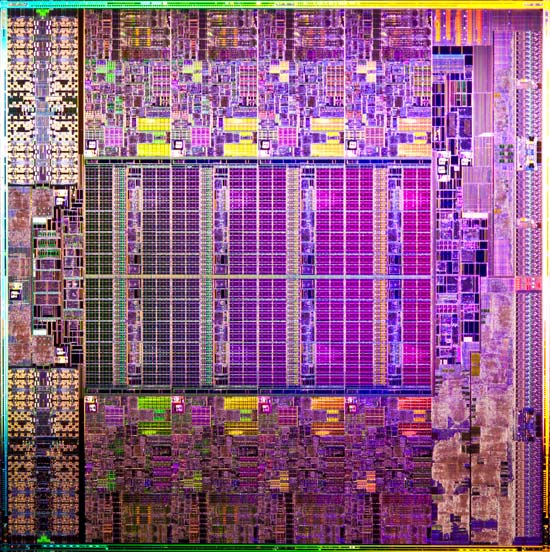Intel Xeon E5-2600 & R2000GZ Sandy Bridge-EP Server Review
Intel Xeon E5-2600 / R2000GZ Server

When I found out we were getting some of the newly released Intel Xeon E5-2600 series processors to review I was intrigued. Much of my life is spent installing and configuring servers of almost every conceivable role, so I was quite interested in seeing what Intel’s best was capable of. Besides the usual round of benchmarks on this server we decided to test it as a web server. With co-location space being a rather expensive commodity, packing as much processing power per unit (U) is rather important.
Stepping away from our typical desktop component reviews for a minute, we are going to take a look at another side of the computer world. Servers, without them we wouldn’t have much of a network infrastructure. The Intel ‘Grizzly Pass’ server features some of the latest technology from Intel. Mainly it brings the latest LGA2011 processors to the server world. Recently we have been focused on the Intel ‘Sandy Bridge’ E processor and the Intel X79 chipset motherboards. Currently that combination of components is the top of the line for desktops. Recently though Intel announced the launch of the new Intel Xeon ‘Sandy Bridge’ EP processors in the LGA2011 package. The initial launch of the Intel Sandy Bridge architecture was just over a year ago for desktop users. The server variant however has had a lengthy delay as the system architecture is quite different from the desktop based LGA-1155 CPU’s. While Intel released the LGA-1155 based Xeon E3 late last year, it was limited to a single socket and more designed to the high end workstation market. With the new Xeon E5-2600 series supporting 2 sockets and the upcoming 4600 series supporting 4 sockets the wait is finally over.
In order for a system like the Intel ‘Grizzly Pass’ to work, the processors need to be able to talk to each other. This is accomplished by each of the Intel Xeon E5-2660 processors have a pair of QPI (Quick Path Interconnects). So if you’re hoping to drop in a pair of Intel Core i7 3960X processors or the more budget friendly Intel Core i7 3820 in this system or a desktop motherboard like the EVGA SRX dual LGA2011 Socket motherboard, you’ll be out of luck. The Intel Core i7 processors series is left with only a single QPI.

The Intel Xeon E5-2600 series CPU contains up to 8 cores plus HyperThreading for a total of 16 threads per processor. The Intel ‘Grizzly Pass’ server we have on hand today has a pair of Intel Xeon E5-2660 Sandy Bridge EP processors, that gives us a total of 32 processing threads! The Intel Xeon E5-2600 series is built on 32nm technology and the overall die size is 416mm. Also on this huge 416mm die is 20MB of L3 cache adding up to a transistor count of around 2.263 billion transistors.

With 2 QPI links, 40 PCI Express 3.0 lanes per socket and Quad Channel LRDIMM (Load-Reduced DIMM) support the Xeon E5 appears to be ready for high performance workloads.

Each of the Intel Xeon E5-2660 processors runs at a default speed of 2.2GHz. When loading up the system with Prime95 the Intel Turbo Boost 2.0 kicks in and boost the processor speed up to 2.5GHz across all of the cores. When running lightly threaded applications the Intel Xeon E5-2660 has a maximum processor frequency of 3.0GHz.
| Processor Support | Support for one or two Intel Xeon processors E5-2600 product family with a Thermal Design Power (TDP) of up to 130 W. |
| Memory | 24 DIMM slots 3 DIMMs / Channel 4 memory channels per processor Unbuffered DDR3 (UDIMM), Registered DDR3 (RDIMM), and Load Reduced DDR3 (LRDIMM) Memory DDR3 data transfer rates of 800, 1066, 1333 MT/s, and 1600 MT/s DDR3 standard I/O voltage of 1.5V and DDR3 Low Voltage of 1.35V |
| Chipset | Intel C600-A |
| External I/O connections | Video Back Panel + Front Panel RJ-45 Serial-A Port 4x RJ-45 Network Interface Connectors supporting 10/100/1000Mb USB 2.0 connectors -3 on back panel + 2 on front panel |
| Internal I/O connectors / headers | One Type-A USB 2.0 connector One DH-10 Serial-B port connector |
| Additional I/O Modules | Dual SFP+ port 10GbE module based on Intel 82500 10 GbE controller AXX10GBNIAIOM |
| System Fans | Five managed system fans One power supply fan for each installed power supply module |
| Riser Cards | Support for two riser card slots. Each riser card slot has support for the following riser card options: 3-slot PCIe Riser Card: (Slots 1 & 2) PCIe x16 slot, x8 lanes, (Slot 3) PCIe x8 slot, x8 lanes 2-slot PCIe Riser Card: (Slot 1) PCIe x16 slot, x16 lanes, (Slot 2) PCIe x8 slot, x8 lanes 3-slot PCIx/PCIe Riser Card: (Slots 1 & 2) PCIx 64-bit, (Slot 3) PCIe x8 slot, x8 lanes |
| Video | Integrated 2D Video Controller 16 MB DDR3 Memory |
| On-board storage controllers and options | 1x eUSB 2×5 pin connector to support 2mm low-profile eUSB solid state devices 2x 7-pin single port AHCI SATA connectors capable of supporting up to 6 GB/sec 2x SCU 4-port mini-SAS connectors capable of supporting up to 3 GB/sec Intel RAID C600 Upgrade Key support providing optional expanded SATA / SAS RAID capabilities (RKSAS8R5 ‘purple’ key installed) Intel Integrated RAID Module RMS25CB080 1GB |
| Server Management | Integrated Baseboard Management Controller, IPMI 2.0 compliant Support for Intel Server Management Software Intel Remote Management Module 4 Lite Accessory Option Intel Remote Management Module 4 Management NIC Accessory Option |
| Power Supply | 2x 750W Redundant, Hot Swap DPS-750XB (80+ Platinum) |
| Storage Bay | 8x 2.5 SATA/SAS Hot Swap Hard Drive Bays + Optical Drive support |

Comments are closed.